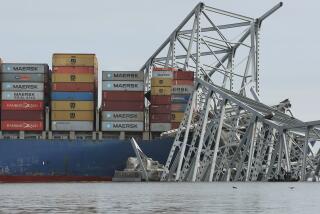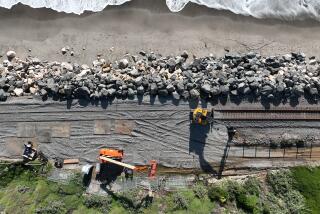UCI Gets Bridge Research Contract : Safety: Engineers will use $508,223 from Caltrans to seek cheaper, earthquake-safe ways to build the structures. Focus will be on alternative support walls.
IRVINE â Searching for cheaper but earthquake-safe ways to build bridges, civil engineers at UC Irvine have received a $508,223 contract from Caltrans to test modern bridge and freeway overpass construction, campus officials said.
Scheduled for completion in June, 1994, the research involves rectangular, pier-shaped support walls that are alternatives to traditional freeway support columns.
âFailure of these walls during an earthquake may lead to bridge collapse,â said Medhat Haroun, chairman of UCIâs civil engineering department. âThis concern has led to very strict, new construction standards for these supports.â
Haroun, who will conduct the research with professors Robin Shepherd and Gerard Pardoen, said the goal is to look for ways to reduce the cost of constructing such walls without sacrificing safety, perhaps by eliminating some currently mandated steel crossties.
Researchers are building six half-scale pier walls at UCIâs seismic lab. The walls will be subjected to forces similar to a strong earthquake using sophisticated shaking equipment as computer sensors monitor their internal behavior.
The UCI researchers have already studied various retrofitting procedures for older pier walls, built up to three decades ago.
âThe majority of the tested pier walls behaved very well,â Haroun said. âHowever, a few older pier walls still may be in need of retrofitting because they were constructed before design standards fully benefited from advances in seismic engineering.â
The findings support Caltransâ current method of attaching steel plates at the bases of older pier walls, Haroun added, âproviding that the pass-through steel bolts that anchor the plate to the wall are spaced close enough together.â
On Monday, UCI researchers will begin quake-testing another type of wall used in light industrial buildings--so-called tilt-up walls. Nearly 50% of the reinforced concrete warehouses, office buildings, stores and factories in California utilize such walls, which are poured on the ground and lifted up to form the outer frame of these buildings.
The National Science Foundation is funding part of tilt-up wall study.






